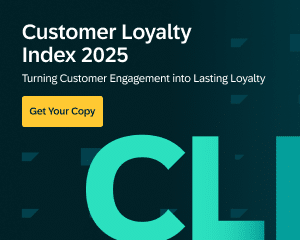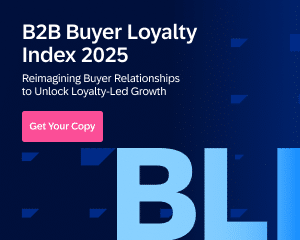Imagine you’re juggling dozens of campaign ideas, each promising to boost revenue – but the endless data, multiple tech platforms, and high-level performance demands are making your team spin.
You know email is key to driving conversions, but proving its impact and aligning it with broader business goals can feel overwhelming.
As new tech solutions appear daily, you might feel pressured to keep your teams in sync and your messaging aligned with bigger organizational goals. Yet success stories abound: data-driven approaches, thoughtful segmentation, and automation can help you accelerate your ability to generate revenue from email while also reducing the manual burden.
Below, we explore key best practices – from unifying your customer data to leveraging AI-driven personalization – that can help you recapture lost shoppers and boost long-term loyalty. Along the way, we’ll highlight how solutions like SAP Emarsys power these recovery efforts, delivering the right message at a time it’s most likely to be engaged with.
Building a Strategic Foundation for Email Campaign Management
Setting the right strategy from the outset is crucial for any marketing leader looking to unify their team’s efforts and tie email performance directly to the bottom line.
While competitor pages may offer free tools or feature comparisons, they often lack deep guidance on linking your email tactics to high-level business outcomes.
As a CMO juggling multiple metrics, you need to ensure each campaign looks on-brand and moves the revenue needle.
Aligning email with broader business goals
It’s easy for email campaigns to run in isolation, primarily if different teams handle separate brand touchpoints. But stepping back to view the bigger picture can help you craft campaigns that support your most significant priorities rather than distract from them.
For example, if your brand’s quarterly objective is to boost average order value (AOV), for example, then every email push, from new product announcements to loyalty updates, should align with that outcome.
Pro tip: Consider the 80/20 rule in email marketing: 80% of your efforts should focus on messages that directly drive engagement and conversions, while 20% can be experimental—testing new formats or subject lines. This approach ensures you maximize ROI while giving your team room for innovation.
The power of strategic segmentation
Segmentation can directly advance revenue goals by zeroing in on your highest-value audiences or brand-new leads needing a nudge. Consider dividing customers into categories—like top spenders vs. occasional browsers—so each segment sees tailored content that resonates.
By setting up advanced segmentation in your marketing platform, you can track open rates, click-through rates, and conversions for each sub-group, ensuring you know exactly where your best returns come from.
- Decision trigger: If you want to apply segmentation quickly, consider offering a micro-conversion such as “Download a quick segmentation template,” guiding your users toward immediate practicality.
- Example scenario: A B2B tech company separated enterprise clients from small-business leads, sending each group distinct educational content relevant to their purchase journeys. As a result, the enterprise segment saw more sign-ups for product demos, and the small-business segment responded well to monthly subscription deals.
Advanced Optimization and Automation Techniques
Once your strategic foundation is set, the next step involves optimizing your processes with automation, advanced personalization, and continuous testing. By taking each aspect of the 4 P’s of email marketing (Product, Price, Place, Promotion) to a more sophisticated level, you can seamlessly orchestrate campaigns that scale as your customer base grows.
Elevating the 4 P’s with automation
Each “P” can be enhanced by data-driven workflows:
- Product: Let your system automatically recommend items, using real-time purchase or browsing history.
- Price: Adjust promotional offers based on user behaviors (like cart abandonments or repeated product views).
- Place: Tailor messages according to location or device usage; if the user is on mobile, highlight frictionless purchase paths.
- Promotion: Align discounts or limited-time deals with previously observed brand interactions.
What are the 5 T’s of email marketing? They’re Target, Tease, Teach, Test, Track—and each T becomes more potent when you let the platform do the heavy lifting. You’ll refine targeting and speed up campaign adjustments by adopting triggered sends, AI-based suggestions, and dynamic content blocks.
Best practices on A/B testing and continuous learning
A/B testing is essential for perfecting everything from subject lines to CTA placements. But it’s also easy to spend hours analyzing metrics. The good news? Automated tools can test variations and deliver real-time insights.
Meanwhile, triggered sends—like welcome sequences or post-purchase recommendations—keep your brand at the forefront of your mind without requiring manual intervention every time.
Example scenario: A medium-sized travel company realized their weekly newsletter open rate plateaued. By employing A/B tests on subject line length, personalization tokens, and send times, they discovered short, curiosity-driven subject lines improved open rates by 12%. Integrating these results into triggered campaigns saved the marketing team hours of repeated analysis each month.
Metrics and benchmarking essentials
Tracking the proper performance indicators ensures you’re never flying blind. Below are some bullet-point suggestions:
- Open rate: Reflects initial subject-line effectiveness. Combine with data to enhance your email deliverability tactics to maintain strong inbox placement.
- Click-through rate (CTR): Gauges how compelling your content or offers are once the email is opened.
- Overall conversion: Ties the final action (purchase, sign-up) back to the email.
- Revenue per email: A more precise metric for revenue-obsessed CMOs.
- What is the 50 30 20 marketing rule? Some marketers allocate 50% of the budget to proven channels, 30% to new or emerging tactics, and 20% to experimental campaigns. This helps you strike a balance between safe bets and innovation.
By focusing on these KPIs, you’ll quickly see if your segmentation, personalization, or automation approach is hitting the mark—and what might need refining.
Personalization, Compliance, and Integration for Scalable Growth
Now it’s time to broaden your scope to personalization at scale, robust compliance, and integrated tech solutions that unify your messaging across channels. This is where deeper brand trust emerges and sustained ROI becomes more predictable.
What are the 4 C’s of email marketing?
They’re often summarized as Cost, Convenience, Credibility, and Communication—and each “C” is vital for advanced personalization:
- Cost: A well-structured approach, guided by integrated data, prevents overspending on non-performing segments.
- Convenience: By seamlessly aligning data from your CRM, eCommerce, or loyalty apps, you make the consumer experience frictionless.
- Credibility: Proving your brand is respectful of data privacy and relevant in your messaging fosters trust.
- Communication: Balanced frequency, strong creative, and consistent brand voice.
Balancing compliance with data-driven growth
Adhering to GDPR, CAN-SPAM, or local privacy laws can be daunting. But with the right strategy, it becomes a differentiator rather than a hurdle. Different tools can provide features for controlling consent and respecting user preferences across channels.
This synergy ensures your brand abides by “How many marketing emails per week is too many?”—a critical question for compliance and user satisfaction.
Note: Some enterprise solutions (e.g., Salesforce) can seem oversized for mid-market brands. SAP Emarsys offers enterprise-caliber features with user-friendly interfaces for mid-sized and large organizations, bridging the gap left by strictly enterprise-focused software.
Explore Emarsys’s personalization suite to see how you can refine your email personalization strategy. By prioritizing compliance (GDPR, CAN-SPAM, etc.) and robust data integration, you create a solid platform for sustainable revenue generation and reliable customer experiences.
Accelerate Growth with AI-Driven Email Marketing
Email does so much more than deliver promotions – when powered by AI and a unified customer view, it becomes your prime growth driver. You can transform each campaign from a routine message into a revenue engine by aligning strategic planning, advanced automation, and data-fueled personalization.
SAP Emarsys offers comprehensive email marketing capabilities that balance sophistication with ease of use, including:
- You can build dynamic, predictive segments in minutes, delivering relevant products at precisely the right moment.
- Real-time deliverability and advanced analytics – including revenue contribution tracking – allow you to spot underperforming areas fast, then optimize your campaigns for maximum impact.
- Meanwhile, AI-driven recommendations personalize product suggestions and email content across different customer journey stages, boosting engagement and retention.
PUMA’s success with SAP Emarsys
One brand that is seeing real results is PUMA, which tapped SAP Emarsys for a multi-country, multi-language strategy that quickly scaled advanced email personalization. In just six months, PUMA achieved:
- 5× Revenue from email
- 50% Database growth
- +25% Increase in open rates
- +10× Weekly subscribers
Their lean team activated the “right message, right person, right time” approach across diverse segments and languages – proving advanced email marketing is not just for massive enterprise squads.
Ultimately, streamlined email management, fueled by unified data and AI, sets the stage for sustained growth. Whether you’re segmenting high-value shoppers or establishing robust automated workflows, SAP Emarsys helps you unify insights, automate complex tasks, and personalize every campaign at scale.
When you’re ready to turn your email marketing into a strategic powerhouse, explore our AI-driven email solution or check out our PUMA case study for tangible proof of what’s possible.
Final Thoughts
From strategic planning to advanced automation, every facet of email campaign management contributes to a cohesive, ROI-focused approach. Aligning your email programs with broader business objectives, segmenting effectively, and embracing real-time analytics can turn email from a routine channel into a measurable growth driver.
By leveraging data-driven insights, personalized automation, and compliance best practices, you can streamline your success, transforming manual, labor-intensive campaigns into efficient, high-impact initiatives.
SAP Emarsys stands ready to guide you in orchestrating these efforts at scale, offering robust segmentation, AI-driven recommendations, and a unified view of your customers.
Ready to step up your email campaign management game? Start your free consultation to elevate your strategies and discover how SAP Emarsys can help unify your data, optimize personalization, and fuel revenue growth through every send.







